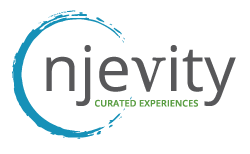Microsoft recently announced that it will end official support for Dynamics GP in 2031, and let’s be real: the news sparked plenty of drama and anxiety in the GP community. But here’s the question we should all be asking: why? Why so much angst over an end date that’s still nearly a decade away? And more to the point, why are some parties making this into such a big deal when the truth is, thousands of businesses successfully run on legacy systems long after support has ended?
Let’s dive into why the reaction to this announcement may be less about customer needs and more about the motivations of certain industry players.
Unsupported, But Still Running Strong
Here’s the thing—Dynamics GP isn’t alone in this. Look at FRx, a financial reporting tool that Microsoft hasn’t supported in years. There are still plenty of GP customers who rely on FRx for their financial reporting. Then there’s Navision, Dynamics AX2009, and even Great Plains Accounting (yes, DOS-based Great Plains!). Across Europe, there are over 100,000 companies running old, highly customized versions of Navision, and many of them have no interest in moving to its cloud counterpart, Dynamics 365 Business Central (BC), which is essentially the latest version of Navision. Why? Because for these customers, the cost of upgrading is steep, and they see no real benefit in switching when what they have still works just fine.
Unsupported doesn’t mean unusable. A stable ERP system like GP doesn’t suddenly stop working when official support ends.
We even talked to a partner at the PowerGP Online Party at Summit NA recently who focuses on Dynamics AX and Dynamics 365 Finance and Supply Chain. This partner noted that thousands of companies are still running on old, unsupported versions of AX2009. The reason? The cost to update all the custom code is astronomical, and many simply don’t see the value in such an expensive shift. In other words, for thousands of businesses, sticking with their current systems, even unsupported ones, is the logical choice.
So, if companies are clearly comfortable on legacy software—even software that’s unsupported—why the fuss over Dynamics GP?
Are We Being Scared Into Change?
There’s no question that Dynamics GP is the backbone for tens of thousands of companies. GP offers features, customization, and integration options that make it indispensable for the customers who rely on it. And Microsoft has been clear that they’ll support GP through 2031. But here’s where it gets interesting: despite this decade-long timeline, the loudest voices around this announcement are often from those who stand to gain if customers decide to switch.
It’s not hard to imagine why. Moving to a new ERP system isn’t cheap. There are licensing costs, implementation fees, and often months of expensive consulting services to get the new system up and running. So who benefits most from this shift? Not necessarily the customers. If you’re running a stable version of Dynamics GP, you may be better off continuing to use what works rather than overhauling your entire ERP system.
Who Stands to Gain?
While some Partners genuinely want to help their customers find the best long-term solutions, there are also players who stand to make significant profits from new ERP implementations. For certain partners and competitors, the end of GP support isn’t a problem—it’s an opportunity. By stoking fears and highlighting every potential “pitfall” of remaining on GP, they can push for new sales of Dynamics 365 Business Central, NetSuite and Acumatica.
If your Partner is pushing for a costly migration, ask yourself: whose interests are truly being served?
When Microsoft and its affiliates push for costly implementations, whose interests are they really protecting? If it’s truly about the customer, why not respect the decision to remain on GP for as long as it continues to meet the business’s needs?
The Reality: Legacy Systems Are Not Going Away and Neither is Dynamics GP
Let’s remember that unsupported doesn’t mean unusable. Unsupported means that the publisher has ceased providing new updates and won’t answer the phone if you call. But a stable ERP system—especially one like GP that’s been a staple of business accounting for years—doesn’t suddenly stop working when official support ends.
At the end of the day, a company’s ERP is about their business needs, not the software publisher’s roadmap.
At the end of the day, a company’s ERP is about their business needs, not the software publisher’s roadmap. Many companies are more than willing to stay with Dynamics GP, secure in its reliability and well-aware that GP partners like Njevity will continue to provide the support, tools, and cloud options they need (and we will even answer the phone when you call).
Shouldn’t We All Have the Right to Choose?
So, to all the Dynamics GP customers out there: if staying with GP serves your business needs, remember that you have a choice. If your Partner is pushing for a costly migration, ask yourself, whose interests are truly being served? In the end, it’s your business, and the decision should be yours.
As we move toward 2031, let’s not allow fear to dictate the future. Instead, let’s stay grounded in what’s best for each business, considering the facts, the options, and the real motivations driving those who would have you spend hundreds of thousands of dollars on a new system.
Because, ultimately, it should be your choice—not their agenda.




